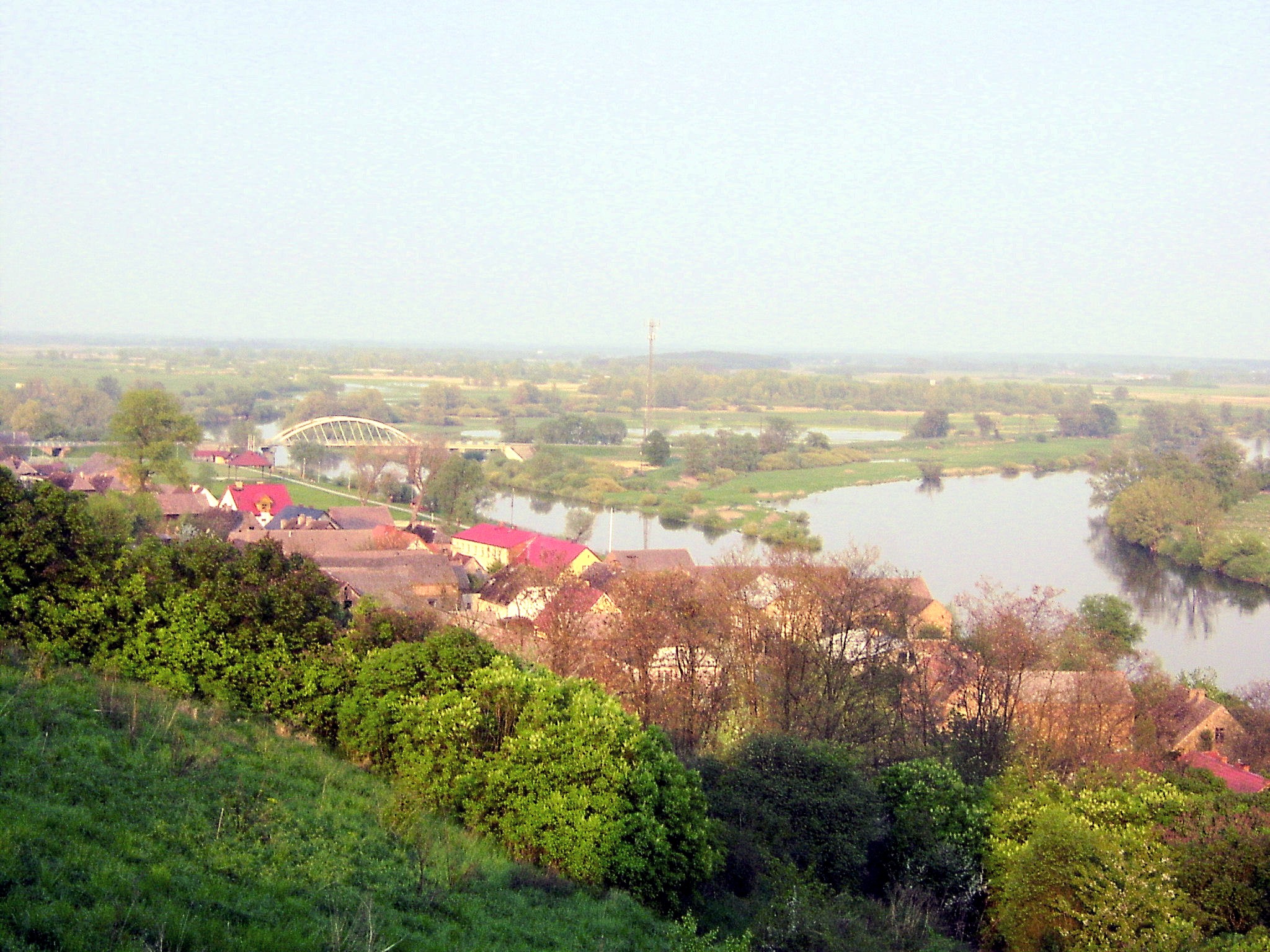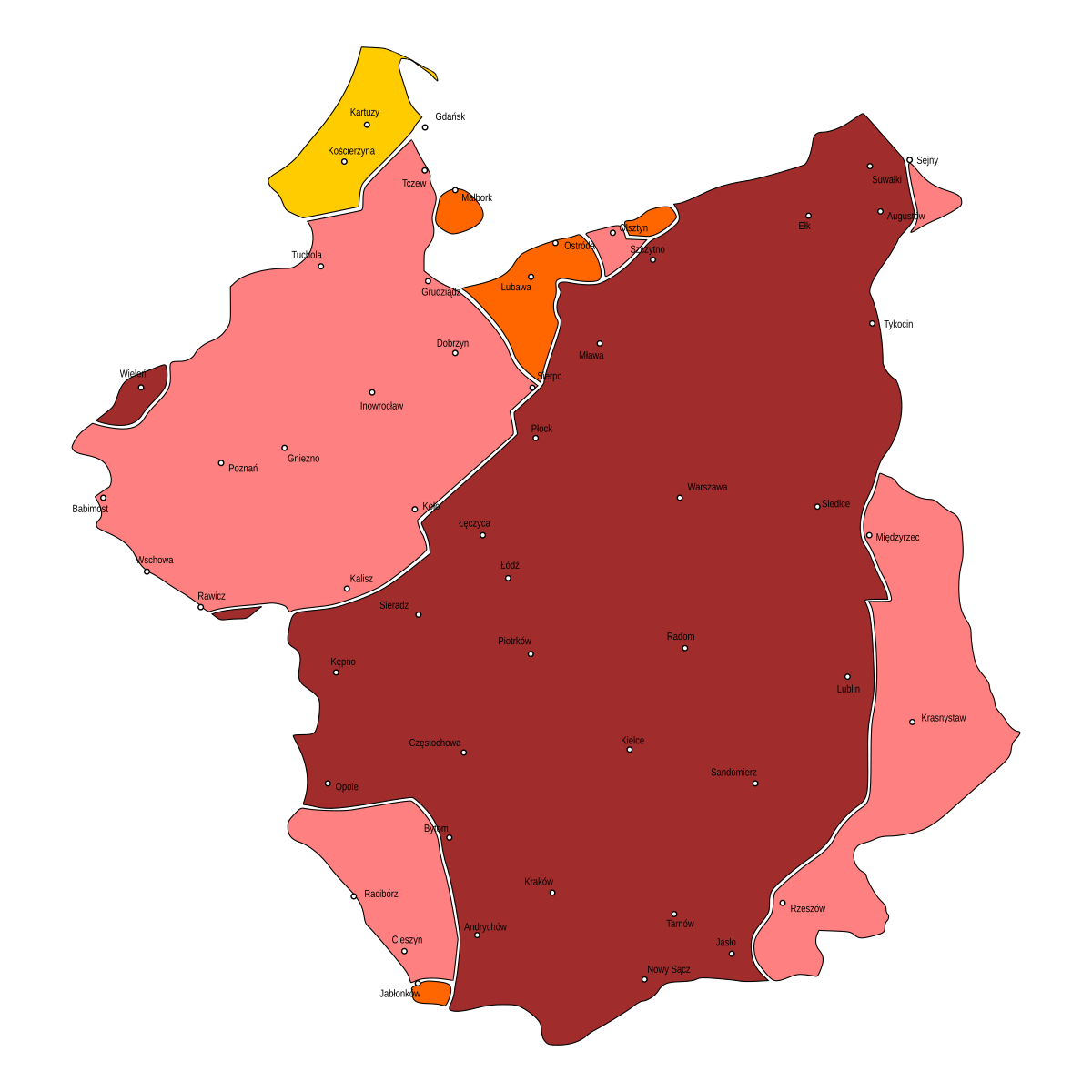|
Greater Polish Dialect
Greater Poland dialect ( pl, dialekt wielkopolski) is a dialect of Polish language used in the Greater Poland. It is used in the area, on the south from the cities of Koło, Kalisz, Ostrów Wielkopolski, Rawicz, and Babimost, from the west from Międzychód Międzychód (, german: Birnbaum) is a town in Greater Poland Voivodeship, Poland, the administrative seat of Międzychód County. It is located on the southern shore of the Warta river, about west of Poznań. Population is 10,915 (2009). His ... and Krzyż Wielkopolski, and along the line of the rivers of Noteć and Warta. Subgroups There are 4 major subgroups of the dialect:Stanisław Dubisz, Halina Karaś, Nijola Kolis: ''Dialekty i gwary polskie''. * Central Greater Poland, * Southern Greater Poland, * Western Greater Poland, * Northern Greater Poland. Citations References {{reflist Bibliography *Stanisław Dubisz, Halina Karaś, Nijola Kolis: ''Dialekty i gwary polskie''. 1st eddition. Warsaw: Wiedza ... [...More Info...] [...Related Items...] OR: [Wikipedia] [Google] [Baidu] |
Poland
Poland, officially the Republic of Poland, is a country in Central Europe. It is divided into 16 administrative provinces called voivodeships, covering an area of . Poland has a population of over 38 million and is the fifth-most populous member state of the European Union. Warsaw is the nation's capital and largest metropolis. Other major cities include Kraków, Wrocław, Łódź, Poznań, Gdańsk, and Szczecin. Poland has a temperate transitional climate and its territory traverses the Central European Plain, extending from Baltic Sea in the north to Sudeten and Carpathian Mountains in the south. The longest Polish river is the Vistula, and Poland's highest point is Mount Rysy, situated in the Tatra mountain range of the Carpathians. The country is bordered by Lithuania and Russia to the northeast, Belarus and Ukraine to the east, Slovakia and the Czech Republic to the south, and Germany to the west. It also shares maritime boundaries with Denmark and Sweden. ... [...More Info...] [...Related Items...] OR: [Wikipedia] [Google] [Baidu] |
Greater Poland
Greater Poland, often known by its Polish name Wielkopolska (; german: Großpolen, sv, Storpolen, la, Polonia Maior), is a Polish historical regions, historical region of west-central Poland. Its chief and largest city is Poznań followed by Kalisz, the oldest city in Poland. The boundaries of Greater Poland have varied somewhat throughout history. Since the Middle Ages, Wielkopolska proper has been split into the Poznań Voivodeship (14th century to 1793), Poznań and Kalisz Voivodeship (1314–1793), Kalisz Administrative division of the Polish–Lithuanian Commonwealth, voivodeships. In the wider sense, it also encompassed Sieradz Voivodeship (1339–1793), Sieradz, Łęczyca Voivodeship, Łęczyca, Brześć Kujawski Voivodeship, Brześć Kujawski and Inowrocław Voivodeship, Inowrocław voivodeships, which were situated further eastward. After the Partitions of Poland at the end of the 18th century, Greater Poland was incorporated into Kingdom of Prussia, Prussia as the ... [...More Info...] [...Related Items...] OR: [Wikipedia] [Google] [Baidu] |
Warta
The river Warta ( , ; german: Warthe ; la, Varta) rises in central Poland and meanders greatly north-west to flow into the Oder, against the German border. About long, it is Poland's second-longest river within its borders after the Vistula, and third-longest including the Oder, that flows also across Czech Republic and Germany.Statistical Yearbook of the Republic of Poland 2017 , p. 85-86 Its |
Noteć
Noteć (; , ) is a river in central Poland with a length of (7th longest) and a basin area of . , p. 85-86 It is the largest tributary of the river and lies completely within Poland. Course [...More Info...] [...Related Items...] OR: [Wikipedia] [Google] [Baidu] |
Krzyż Wielkopolski
Krzyż Wielkopolski (german: Kreuz (Ostbahn)) is a town in Poland, with 6,176 inhabitants (2019) in the Czarnków-Trzcianka County, Greater Poland Voivodeship. It is an important railroad junction, with two major lines crossing there - the Berlin-Bydgoszcz and the Poznań-Szczecin connections. History From 1847 to 1848 the line of the Stargard-Posen Railway Company was built through the area. In 1848, the construction of a train station began at the planned junction of the Küstrin-Posen line, with a reception building built in the classical style. The town owes its existence to the rail, as developed only after 1848, when the Poznań-Szczecin line was opened, crossing the Prussian Eastern Railway. In fact its name (''Krzyż'' and ''Kreuz'' in English mean ''cross'') reflects the fact that rail lines cross there. Although the construction of the Prussian Eastern Railway was only finally approved by the Prussian state parliament at the end of 1849, the railway station Kreuz wi ... [...More Info...] [...Related Items...] OR: [Wikipedia] [Google] [Baidu] |
Międzychód
Międzychód (, german: Birnbaum) is a town in Greater Poland Voivodeship, Poland, the administrative seat of Międzychód County. It is located on the southern shore of the Warta river, about west of Poznań. Population is 10,915 (2009). History The town was first mentioned as ''Międzybrud'' (after Polish ''między'', "between", ''bród'', "ford") in a 1378 deed. It was a private town of Polish nobility, administratively located in the Poznań County in the Poznań Voivodeship in the Greater Poland Province of the Polish Crown. It was a settlement area for German artisans and merchants moving into the Polish lands from the adjacent Neumark region. In the 1793 Second Partition of Poland, Międzychód together with the bulk of Greater Poland was annexed by the Kingdom of Prussia as ''Birnbaum''. In 1807 it was regained by Poles and included within the short-lived Duchy of Warsaw. In 1815 it was reannexed by Prussia, incorporated as the capital of the Kreis Birnbaum in the ''Reg ... [...More Info...] [...Related Items...] OR: [Wikipedia] [Google] [Baidu] |
Babimost
Babimost (german: Bomst) is a small town in western Poland in Zielona Góra County, Lubusz Voivodeship. It is the administrative seat of Gmina Babimost. As of December 2021, it has a population of 3,847. Geography The town is situated on the Leniwa Obra creek, about northeast of Sulechów and about west of Poznań. Though located in Lubusz Voivodeship, Babimost is part of the Greater Poland historic region. History The settlement probably arose about 1000 AD around a castellany located at a crossing through the swampy Leniwa Obra river. The estates were held by the Pomeranian Swienca family until 1307; together with nearby Sulechów, they were acquired by Margrave Waldemar of Brandenburg in 1319, who nevertheless died in the same year. By 1329, they were held by the Silesian duke Henry IV the Faithful, then a Bohemian vassal. Finally incorporated into the Polish Poznań Voivodeship in 1332 (which was later also part of the larger Greater Poland Province of the Polish Crown), ... [...More Info...] [...Related Items...] OR: [Wikipedia] [Google] [Baidu] |
Rawicz
Rawicz (; german: Rawitsch) is a town in west-central Poland with 21,398 inhabitants as of 2004. It is situated in the Greater Poland Voivodeship (since 1999); previously it was in Leszno Voivodeship (1975–1998). It is the capital of Rawicz County. History The town was founded by Adam Olbracht Przyjemski of Rawicz coat of arms for Protestant refugees from Silesia during the Thirty Years' War. In 1638 King Władysław IV Vasa granted Rawicz town rights and confirmed the town's coat of arms. Rawicz was built as a precisely planned town and developed at a rapid pace. It was located on the trade route connecting Poznań and Wrocław. In 1640, a cloth guild was founded. Cloth production became a leading branch of the local industry, and by the end of the 18th century Rawicz was the leading weaving town of the whole region of Greater Poland. Rawicz was a private town of Polish nobility, administratively located in the Kościan County in the Poznań Voivodeship in the Greater Poland ... [...More Info...] [...Related Items...] OR: [Wikipedia] [Google] [Baidu] |
Ostrów Wielkopolski
Ostrów Wielkopolski () (often abbreviated ''Ostrów Wlkp.'', formerly called simply ''Ostrów'', german: Ostrowo, Latin: ''Ostrovia'') is a city in west-central Poland with 70,982 inhabitants (2021), situated in the Greater Poland Voivodeship; the seat of Ostrów Wielkopolski County. It is the fifth-largest city in the voivodeship after Poznań, Kalisz, Piła and Konin. History Recently, a small fortified dwelling dating from the 10th century was discovered on the north-east side of the town's limits. An archeological excavation is now in progress. It was part of Poland since the establishment of the state in the 10th century. The oldest known mention of Ostrów comes from a document from 1293. Ostrów received town rights in 1404 but the economic stagnation caused by fires, wars, and a weak 16th-century nobility, led to the town's officials dropping its town status in 1711. Administratively it was located in the Kalisz Voivodeship in the Greater Poland Province of the Polish ... [...More Info...] [...Related Items...] OR: [Wikipedia] [Google] [Baidu] |
Kalisz
(The oldest city of Poland) , image_skyline = , image_caption = ''Top:'' Town Hall, Former "Calisia" Piano Factory''Middle:'' Courthouse, "Gołębnik" tenement''Bottom:'' Aerial view of the Kalisz Old Town , image_flag = POL Kalisz flag.svg , flag_border = no , image_shield = POL Kalisz COA.svg , pushpin_map = Poland Greater Poland Voivodeship#Poland , pushpin_relief = 1 , pushpin_label_position = bottom , subdivision_type = List of sovereign states, Country , subdivision_name = , subdivision_type1 = Voivodeships of Poland, Voivodeship , subdivision_name1 = , subdivision_type2 = Powiat, County , subdivision_name2 = ''city-county'' , leader_title = Mayor , leader_name = Krystian Kinastowski , established_title = Established , established_date = 9th century , established_title3 = Town rights , established_date3 = after 1268 , area_total_km2 = 69.42 , population_as_of = 31 December 2021 , population_total = 97,905 (List of cities and towns in Poland, 38th) ... [...More Info...] [...Related Items...] OR: [Wikipedia] [Google] [Baidu] |
Koło
Koło (; during the German occupation called ''Wartbrücken'' in 1940–41, ''Warthbrücken'' in 1941–45) is a town on the Warta River in central Poland with 23,101 inhabitants (2006). It is situated in the Greater Poland Voivodship (since 1999), having previously been in Konin Voivodship (1975–1998), and it is the capital of Koło County. History Koło is one of the oldest towns in Poland. It was granted town status in 1362 by King Casimir III. It was situated in a safe place near the royal castle, on the island in the branches of the Warta River; the town had no walls but only two gates. It was a royal city and the seat of a land county (''starostwo niegrodowe''). . 16–18/sup> In 1410 Koło was a gathering place of the Greater Poland nobility, which called for a war with the Teutonic Order (see Battle of Grunwald). In 1452 the Royal Castle in Koło was the place of meeting between King Casimir the Jagiellonian and the representatives of the Prussian Union (see ... [...More Info...] [...Related Items...] OR: [Wikipedia] [Google] [Baidu] |
Dialects Of Polish
Polish dialects are regional vernacular varieties of the Polish language. Four major dialect groups are typically recognized, each primarily associated with a particular geographical region, and often further subdivided into subdialectal groups (termed ''gwara'' in Polish).Roland Sussex and Paul Cubberley (2006). ''The Slavic Languages''. Cambridge University Press. P. 530.Robert A. Rothstein (1994). "Polish". ''The Slavonic Languages'', edited by Bernard Comrie and Greville G. Corbett. Routledge. Pp. 754–756. They are: * Greater Polish, spoken in the west * Lesser Polish, spoken in the south and southeast * Masovian, spoken throughout the central and eastern parts of the country * Silesian spoken in the southwest (sometimes also considered a separate language, see comment below) The regional differences correspond mainly to old ethnic or tribal divisions from around a thousand years ago. As a result of 19th century measures taken by occupying powers, of expulsions plus o ... [...More Info...] [...Related Items...] OR: [Wikipedia] [Google] [Baidu] |




